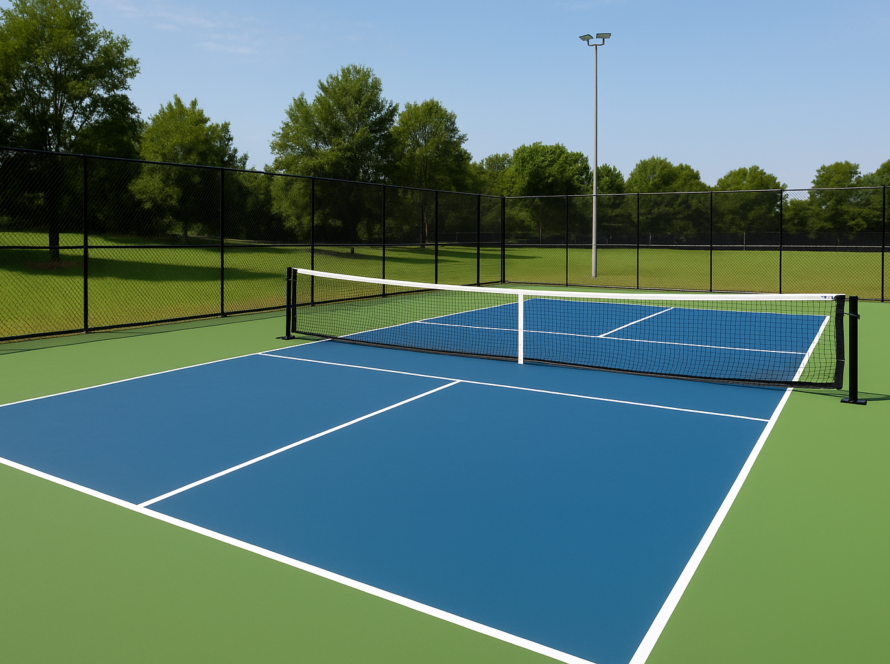Introduction
In the fast-evolving world of pickleball, it’s not always the hardest hitters who dominate the court—it’s often the most strategic players. One of the smartest techniques you can master is the cross-court dink. This soft, diagonal shot into the opponent’s non-volley zone can control the tempo of the game, force your opponent into errors, and open up the court for aggressive plays.
What Is a Cross-Court Dink in Pickleball?
A cross-court dink is a controlled, low-trajectory shot that travels diagonally across the court and lands in your opponent’s kitchen (non-volley zone). This shot is typically played from the non-volley zone on your side and is designed to bounce low, making it difficult for the opponent to return offensively.
Cross-court dinks give players:
- More court space for precision and error margin
- Opportunities to move opponents out of position
- Better angles to expose the opponent’s weaknesses
Key Techniques for a Consistent Cross-Court Dink
1. Adopt the Right Stance and Grip
Stay balanced with knees slightly bent and feet shoulder-width apart. Use a continental grip and hold the paddle with a relaxed wrist to maintain finesse.
2. Focus on Paddle Control
Contact the ball at its lowest point and keep the paddle face slightly open. Avoid over-swinging—use a gentle, compact motion to maintain control and direction.
3. Add Spin and Vary Pace
Introducing light backspin can keep the ball low after the bounce. Mixing up the pace prevents your opponent from settling into a rhythm.
4. Keep the Ball Low
Avoid hitting the ball too high or deep, as this may result in attackable shots. Keep dinks low over the net to limit the opponent’s options.
Strategic Advantages of Cross-Court Dinks

Targeting Opponent Weaknesses
Identify whether your opponent has a weak backhand or slower footwork, and aim your shots to those areas for tactical pressure.
Breaking Patterns with Variation
Mix up your dinking between straight and cross-court placements to avoid being predictable and to disrupt the opponent’s rhythm.
Setting Up for Offense
Use cross-court dinks to move opponents laterally, opening up the middle of the court for aggressive drives, drop shots, or lobs.
Effective Drills to Improve Your Dink Game
Wall Drills
Practice against a wall focusing on soft contact and accurate placement. Aim for a designated target zone to simulate cross-court shots.
Partner Drills
Engage in repetitive cross-court dink rallies with a practice partner. Emphasize placement, spin, and keeping the ball consistently low.
Competitive Scenarios
During practice matches, challenge yourself to complete 10–15 consecutive cross-court dinks before switching to an aggressive play.
Advanced Cross-Court Dink Tactics
Use Deceptive Body Positioning
Disguise your intentions with subtle body movements and paddle angles to keep opponents uncertain about shot direction.
Adapt to Your Opponent
Switch between offensive and defensive dink tactics depending on the skill level and game tempo of your opponent.
Combine Dinks with Shot Variety
Integrate cross-court dinks with straight dinks, lobs, and drops to maintain unpredictability throughout the rally.
Why Cross-Court Dinking Matters at All Levels
Mastering the cross-court dink can improve your shot consistency, extend rallies, and help you transition from defense to offense seamlessly. Whether you’re playing recreationally or preparing for competitive tournaments at Rackonnect Pickleball Events, refining this shot can elevate your overall game.
Related Resources from Rackonnect
- Pickleball Rules and Scoring Guide
- Rally Scoring vs Side-Out Scoring
- Find and Book Nearby Pickleball Courts




